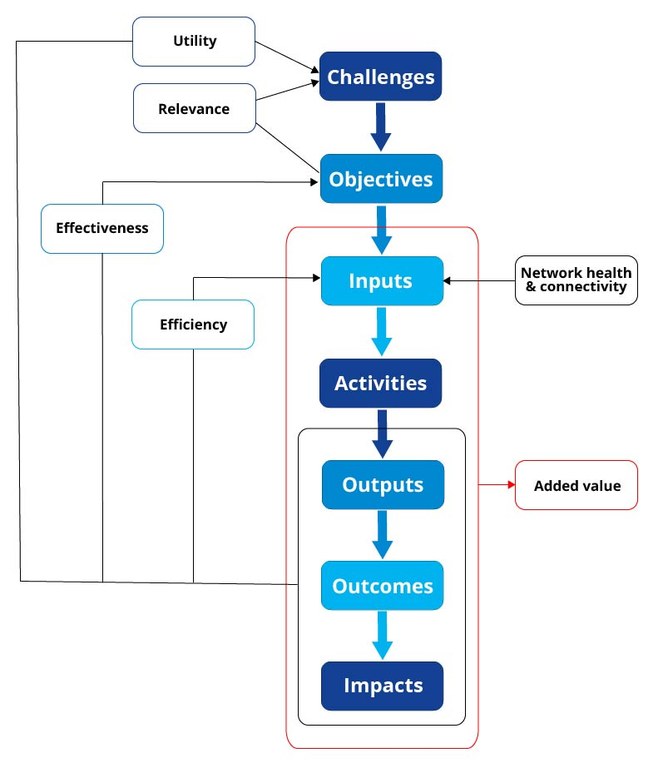Evaluation questions essentially address the relations across the different elements of the Logic Frame and usually come from specific questions that we plan to answer through an evaluation task.
The selection of the evaluation questions to address generally depends on
- the level of development of a P2P,
- the needs/interests of the direct audience of the evaluation,
- the availability and reliability of existing evidence,
- the feasibility of collecting/analysing new data,
- the availability of data sources for both existing and new data,
- the measurability of outcomes/impacts sought, as well as
- time and resource availability for the task of evaluation.

Utility
- How do the effects of a P2P compare with the wider needs of the target populations?
Relevance
- To what extent are the P2P objectives relevant with respect to the needs, problems and issues identified?
Effectiveness
- To what extent do the effects (outputs, outcomes, and impacts) induced by the P2P correspond with its objectives?
Efficiency
- How economically have the resources used been converted into effects?
Added value
- What is the additional value resulting from the P2P, compared to what could be achieved by Member States alone at national and/or regional levels?
- To what extent do the problems/challenges addressed by the intervention require action at EU level?
- What would be the most likely consequences of stopping or withdrawing the existing policy intervention?
'Network health': ability to engage its members, sustain their engagement, and adapt as needed.
- What are the network’s governance rules and are they effective?
- Do decision-making processes encourage members to contribute and collaborate?
- How are the network’s internal systems and structures adapting over time?
- Do all members share a common purpose for the network? Are all members working together to achieve shared goals, including goals that emerge over time?
- Are members achieving more together than they could alone?
- Has a sense of trust developed amongst the network participants?
- Has the P2P secured the necessary resources (capacities, money, and infrastructure) to become self-sustained?
'Network connectivity': the extent to which the members’ ties to each other are resulting in efficient and effective "pathways" for shared learning and action.
- Has the P2P assembled members with the capacities needed to meet network goals (experience, skills, connections, resources)?
- Who is connected to whom?
- Who is not connected but should be?
- Is membership adjusted to meet changing network needs?
- What are the number, quality, and configuration of network ties?
- How dependent is the network on a small number of individuals?
- Is the network structure adjusted to meet changing network needs and priorities?
Additional evaluation questions may include 'coherence' that is the extent to which the intervention logic of the P2P is compatible or in synergy or complementing other interventions with similar objectives, or 'appropriateness' that is the extend to which the intervention is tailored to local needs.


